Welcome to our latest blog post on “Balcony Petunia Garden Design: Tips for a Picture-Perfect Display.” If you have a balcony, creating a vibrant garden can be rewarding and challenging. Petunias, with their stunning colors and versatile growth, elevate your balcony’s appeal. In this article, find expert tips and ideas to craft an eye-catching petunia display that will awe everyone. Let’s delve into balcony gardening and transform your outdoor space with petunia blooms.
Understanding Your Balcony Space: Setting the Stage for Petunia Glory
Creating a beautiful and successful balcony petunia garden starts with understanding your available space. Before you begin planting, assess the size, layout, and conditions of your balcony. Is it a sunny place or a shady area? Is it exposed to strong winds or protected? These factors will influence the type of petunias you can grow and the overall design of your garden.
Begin by measuring your balcony’s dimensions and noting any obstacles or features that could impact your garden layout. Consider the direction it faces and the amount of sunlight it receives throughout the day. If your balcony gets limited sunlight, look for petunia varieties that thrive in partial shade.
In addition to sunlight, take note of the wind patterns on your balcony. Wind can dry out plants and affect their growth, so you may need to provide some protection with barriers or trellises.
Once you’ve analyzed your balcony’s conditions, envision the potential of your petunia garden. Consider the style you want to create – whether it’s a vibrant, colorful display or a more serene and coordinated arrangement. This will help you choose the right petunia varieties and complementary plants for your garden.
By understanding your balcony space and its unique characteristics, you can lay the foundation for a successful and captivating petunia display that will flourish and bring joy to your outdoor living area.
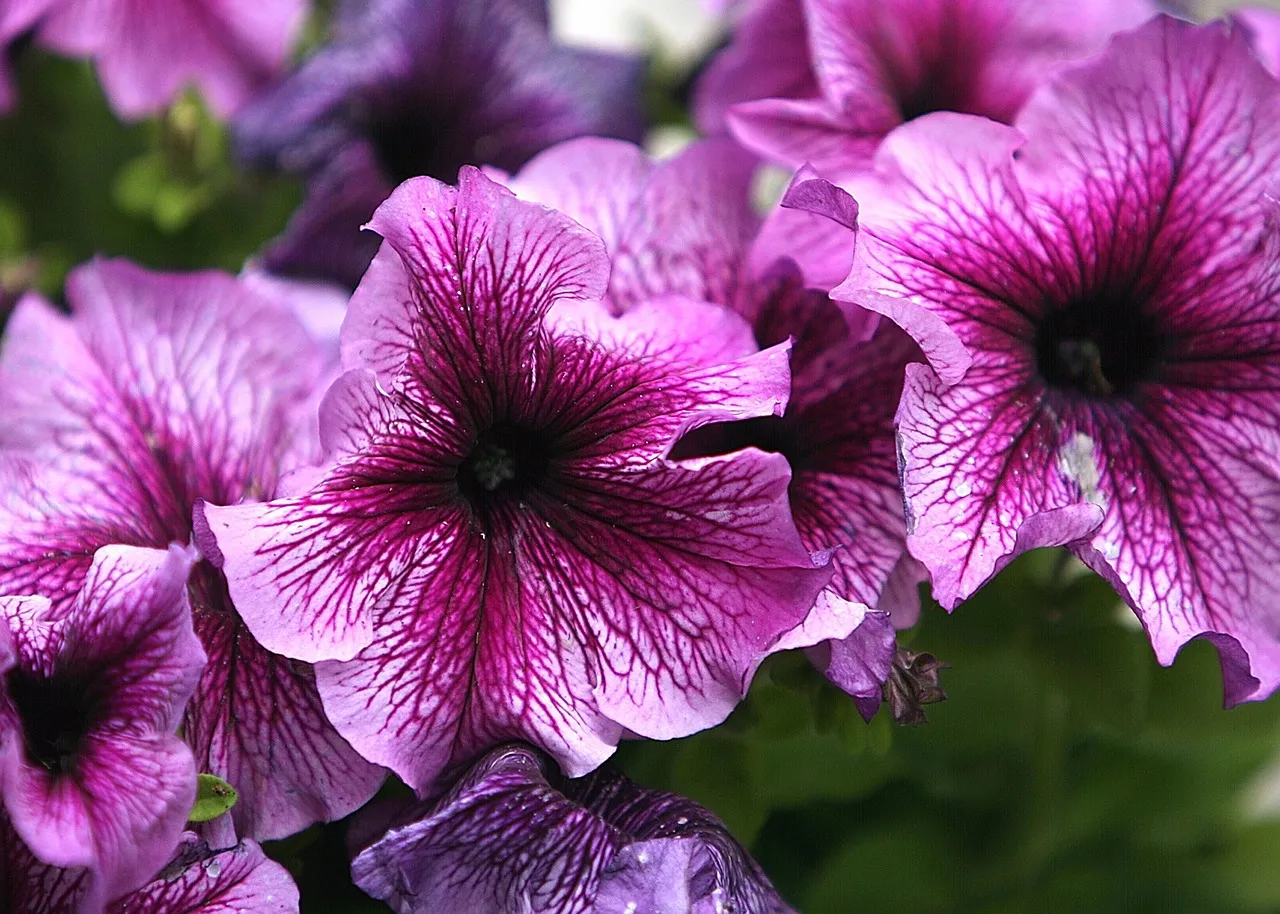
Types of Petunia:
Grandiflora Petunias
Grandiflora petunias are known for their large and showy flowers, making them a popular choice for adding a burst of color to balcony gardens. These petunias feature blossoms that can be as large as three inches in diameter and come in various vibrant colors, including shades of pink, purple, red, and white. Their bold and eye-catching blooms make them ideal for creating a stunning focal point in your garden. Grandiflora petunias are best suited for sunny balconies with well-draining soil.
They are relatively easy to care for and require regular deadheading to encourage continuous flowering. With proper care, these petunias will reward you with a beautiful and picturesque display that will brighten up your outdoor space.
Multiflora Petunias
Multiflora petunias are known for their prolific blooming and compact growth habit. They produce an abundance of smaller flowers compared to grandiflora petunias, but their sheer number of blooms creates a beautiful and dense carpet of color. Multiflora petunias come in a wide range of colors, from soft pastels to bold and vibrant hues, making them versatile for various garden designs. Their compact size and prolific blooming make them an excellent choice for balcony gardens with limited space.
They are also more resistant to adverse weather conditions, making them suitable for balconies that experience fluctuations in sunlight and temperature. With their continuous and abundant flowering, multiflora petunias will add charm and beauty to your balcony garden throughout the growing season.
Milliflora Petunias
Milliflora petunias are a miniature version of their grandiflora counterparts, with tiny blooms that are about one inch in diameter. Despite their small size, milliflora petunias make a big impact with their profusion of flowers and vibrant colors. They are ideal for creating intricate and delicate designs in your balcony garden, and their petite blooms make them an excellent choice for small containers and hanging baskets.
Milliflora petunias come in various colors, including bicolor and tricolor varieties, allowing for creative and eye-catching combinations. Their dainty appearance and continuous blooming make them a charming addition to any balcony garden, and they will surely capture the hearts of all who see them.
Wave Petunias
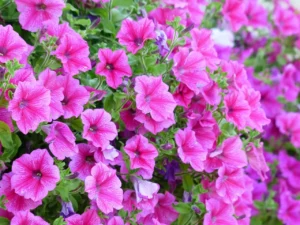
Wave petunias are known for their trailing and spreading growth habit, creating a cascading display of colorful flowers. They are low-maintenance and require less deadheading compared to other petunia types. Wave petunias are perfect for balcony gardens with railings or hanging baskets, as their trailing stems spill over the edges, adding a soft and graceful touch. They come in various colors, including pastels, bold hues, and bicolor varieties, offering a wide range of options for your garden design.
Wave petunias are exceptionally heat-tolerant and can withstand hot and dry conditions, making them ideal for balconies that receive full sun throughout the day. With their trailing and blooming abundance, wave petunias will create a mesmerizing and picturesque display that will be the envy of all your neighbors.
Supertunia Petunias
Supertunia petunias are known for their vigorous growth and continuous blooming. These plants are bred for their exceptional resilience and disease resistance, making them a reliable choice for balcony gardens. Supertunia petunias come in various colors, including striking combinations of contrasting shades.
Their cascading growth habit and profusion of blooms make them perfect for hanging baskets and window boxes, adding a touch of charm and beauty to your balcony. Supertunias are low-maintenance and require minimal deadheading, making them a hassle-free option for busy gardeners. With their long-lasting and vibrant blooms, supertunia petunias will provide a stunning and picturesque display that will captivate and delight all who see them.
Surfinia Petunias
Surfinia petunias are a type of trailing petunia known for their long stems and abundant blooms. They are perfect for cascading over the edges of containers and hanging baskets, creating a spectacular and visually striking display. Surfinia petunias come in a wide range of colors, including pastels, vibrant shades, and eye-catching bicolor varieties. They are heat-tolerant and thrive in full sun, making them well-suited for sunny balconies.
Surfinia petunias are easy to care for and require minimal deadheading to maintain their abundant flowering. With their trailing and graceful appearance, surfinia petunias will add a touch of elegance and beauty to your balcony garden, making it the envy of all your neighbors.
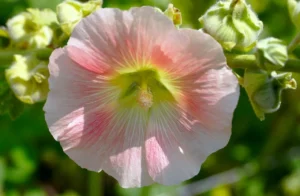
Floribunda Petunias
Floribunda petunias are a hybrid type that combines the characteristics of grandiflora and multiflora petunias. They produce large and abundant flowers like grandiflora petunias, but with a more compact growth habit similar to multiflora petunias. Floribunda petunias come in a wide array of colors, providing various options for your garden design. They are versatile and can be used as a focal point in containers or as a border in your balcony garden.
Floribunda petunias are relatively low-maintenance and require regular deadheading to encourage continuous flowering. With their combination of size and quantity of blooms, floribunda petunias will create a stunning and picturesque display that will impress and enchant all who see them.
Spreading Petunias
Spreading petunias, also known as groundcover petunias, are a type that forms a dense and low-growing mat of flowers. They are perfect for filling in gaps and covering bare soil in your balcony garden. Spreading petunias come in various colors, creating a seamless and vibrant carpet of blooms. They are ideal for sunny balconies with well-draining soil and can withstand hot and dry conditions.
Spreading petunias are easy to care for and require minimal deadheading to maintain their continuous flowering. With their low and spreading growth habit, spreading petunias will add a touch of lushness and color to your balcony garden, creating a picturesque and eye-catching display.
Cascading Petunias
Cascading petunias are a type known for their graceful and trailing growth habit. They are perfect for hanging baskets and containers, as their stems spill over the edges, creating a beautiful and cascading display of blooms. Cascading petunias come in various colors, including vibrant shades and bicolor varieties, offering a wide range of options for your garden design. They are heat-tolerant and can withstand full sun, making them well-suited for sunny and hot balconies.
Cascading petunias are relatively low-maintenance and require minimal deadheading to encourage continuous flowering. With their graceful and trailing appearance, cascading petunias will add a touch of elegance and beauty to your balcony garden, providing a captivating and picturesque display.
Double Petunias
Double petunias have ruffled, double-layered flowers in various colors, perfect for a romantic balcony garden. They thrive in containers, require minimal care, and bloom continuously with regular deadheading. With their whimsical appearance, double petunias create a delightful and picturesque display.
Choosing the Right Petunia Varieties for Your Balcony Garden

With an array of petunia varieties available, selecting the right ones for your balcony garden is essential for a picture-perfect display. Different petunia types offer various colors, sizes, and growth habits, allowing you to create diverse and eye-catching arrangements.
First, consider the size of your balcony and the available planting space. For smaller balconies, compact or trailing petunia varieties work best, as they don’t take up much space and can cascade beautifully over the edges of containers. Larger balconies may accommodate more extensive varieties, providing you with more options to explore.
Next, think about the color palette you wish to achieve. Petunias come in an assortment of colors, from vibrant and bold hues to soft pastels. You can opt for a monochromatic display using different shades of a single color or create a stunning contrast with complementary colors. Ensure that the colors you choose harmonize with the overall theme and style of your balcony garden.
If you want a more dramatic look, consider using bicolored or striped petunia varieties. These unique patterns can add an element of visual interest and create a dynamic focal point in your garden. Moreover, petunias are available in both single and double-flowered forms. Single-flowered varieties produce a more delicate appearance, while double-flowered ones offer a fuller and lusher display. Choose the type that best complements your garden’s aesthetic.
Lastly, consider the growth habit of each petunia variety. Some are more upright and bushy, while others are trailing or spreading. Combining different growth habits can add depth and texture to your garden, making it more visually appealing.
By carefully selecting the right petunia varieties for your balcony garden, you can create a stunning and harmonious display that showcases the beauty and versatility of these delightful flowers.
Color Palettes and Combinations: Creating Harmony with Petunia Flowers
One of the most exciting aspects of designing a balcony petunia garden is the opportunity to play with colors and create harmonious combinations. By selecting the right color palettes, you can transform your outdoor space into a captivating and visually pleasing oasis.
Begin by choosing a dominant color for your petunia garden. This color will be the primary focus and will set the tone for the entire display. Depending on your preferences, you can go for vibrant and bold colors like reds, oranges, and purples, or opt for a more serene and calming ambiance with pastel shades like pinks, blues, and whites.
Once you have the dominant color, select a complementary color that will accentuate and enhance the overall effect. On the color wheel, complementary colors are those that contrast sharply with one another. For example, if your dominant color is purple, the complementary color would be yellow, creating a visually dynamic and vibrant display.
If you prefer a more soothing and coordinated look, choose analogous colors, which are located next to each other on the color wheel. Analogous color combinations create a sense of harmony and unity, making your petunia garden appear more cohesive and serene.For an eye-catching and energetic appearance, consider using triadic color combinations, which involve three colors equally spaced on the color wheel. This arrangement can be more challenging to pull off but can result in a truly stunning and unique display.
Additionally, you can mix and match various petunia varieties within the same color palette to add depth and dimension to your garden. Combine different shades of the same color or use a variety of textures and patterns to create an exciting and visually dynamic arrangement. By carefully selecting and combining colors, you can create a balcony petunia garden that not only captures attention but also brings a sense of joy and tranquility to your outdoor space.
Vertical Gardening with Petunias: Maximizing Space and Aesthetics
If you have limited space on your balcony, don’t let that deter you from creating a beautiful and abundant petunia garden. Vertical gardening is an excellent way to maximize space while adding a touch of beauty and greenery to your walls or railings.
To begin your vertical petunia garden, choose containers that are specifically designed for wall mounting or hanging. These can include wall planters, hanging baskets, or even repurposed pallets. Ensure that the containers are securely attached to your balcony walls or railings to prevent accidents. When selecting petunia varieties for vertical gardening, consider those with trailing or cascading growth habits. Trailing petunias are particularly well-suited for this purpose as they will gracefully spill over the edges of the containers, creating a stunning curtain of color.
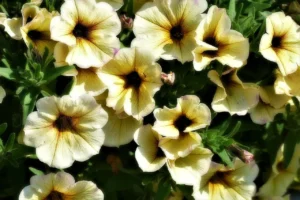
Place the containers at different heights to add depth and dimension to your vertical garden. You can create a cascading effect by placing larger containers at the top and smaller ones below, allowing the petunias to flow downward. Additionally, intersperse the petunias with other trailing plants or trailing foliage to create a lush and textured appearance. Plants like ivy, trailing lobelia, or sweet potato vine can complement the petunias and add variety to the display.
To ensure that your vertical petunia garden thrives, provide adequate watering and ensure that the containers have good drainage. Regularly check the soil moisture and adjust your watering schedule accordingly to prevent the plants from drying out or becoming waterlogged. Vertical gardening not only saves space but also adds an element of visual interest to your balcony, making it a focal point for admiration. With careful planning and creative arrangements, you can transform your vertical space into a breathtaking showcase of petunia beauty.
Container Selection 101: Picking the Perfect Planters for Petunias
When designing your balcony petunia garden, choosing the right containers is a crucial step that can greatly impact the overall aesthetic and health of your plants. The containers you select should not only complement your garden’s style but also provide a suitable environment for your petunias to thrive.
First, consider the size of the containers. Larger containers can accommodate more petunia plants and offer ample space for their root systems to grow. They also retain more moisture, reducing the frequency of watering. Smaller containers are ideal for compact or trailing petunia varieties and are perfect for balconies with limited space.
Next, think about the material of the containers. Common choices include terracotta, ceramic, plastic, and metal. Terracotta containers are classic and provide good drainage, but they can dry out quickly and may require more frequent watering. Plastic containers are lightweight and retain moisture better, but they may not be as aesthetically appealing. Ceramic and metal containers can add a touch of elegance, but they may get hot in direct sunlight, affecting the plants’ roots.
Ensure that the containers have drainage holes to prevent waterlogged soil, which can lead to root rot and other problems. If the containers you choose don’t have drainage holes, consider drilling some or using them as decorative outer pots for inner containers with drainage. To add visual interest and elevate your balcony garden’s aesthetics, consider mixing and matching different types of containers. Combining various shapes, sizes, and colors can create a more dynamic and visually appealing arrangement.
Lastly, think about the mobility of the containers. If your balcony receives varying amounts of sunlight throughout the day, consider using containers with wheels to easily move the plants to sunnier or shadier spots as needed. By carefully selecting the right containers for your petunias, you can ensure that your plants have the best growing conditions and that your balcony garden exudes charm and beauty.
Sunlight and Watering: Balancing Petunia Care for Optimal Growth
Providing the right amount of sunlight and water is crucial for the health and vitality of your balcony petunia garden. Achieving a delicate balance between the two ensures that your petunias receive the nourishment they need to thrive and create a picture-perfect display.
First, consider the sunlight requirements of your petunia varieties. Most petunias prefer full sun, which means they need at least six hours of direct sunlight each day. If your balcony receives less sunlight, opt for petunia varieties that tolerate partial shade. Trailing or cascading petunias are generally more adaptable to varying light conditions.
Ensure that your balcony’s layout allows for sufficient sunlight exposure. Remove any obstructions or barriers that may cast shadows on your petunias during the day. If your balcony has limited sunlight, consider using reflective materials or strategically placing mirrors to redirect sunlight to your plants.
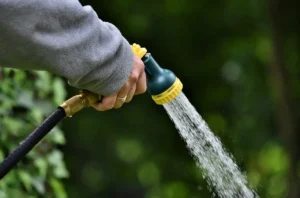
When it comes to watering, finding the right balance is essential. Overwatering can lead to root rot and other problems, while overwatering can cause stress and stunting. Generally, petunias prefer consistently moist but not waterlogged soil. Water your petunias in the morning or early evening to reduce evaporation and allow the plants to absorb the moisture before the heat of the day.
Monitor the soil moisture regularly and adjust your watering schedule based on your balcony’s conditions. In hot and dry weather, you may need to water more frequently, while cooler and more humid conditions may require less watering. Avoid wetting the foliage when watering to prevent the spread of fungal diseases.
In addition to regular watering, consider using a water-soluble fertilizer to provide essential nutrients to your petunias. Follow the manufacturer’s instructions and avoid over-fertilizing, as excessive nutrients can harm the plants. By carefully managing the sunlight and watering of your petunia garden, you can ensure that your plants flourish and reward you with a stunning and abundant display of colorful blooms.
Arranging Petunias in Patterns: Designs That Captivate the Eye
Arranging petunias in patterns is a creative and captivating way to elevate your balcony garden’s visual appeal. By strategically placing your petunia plants, you can create designs that are both aesthetically pleasing and eye-catching. In the “checkerboard” arrangement, petunias of various colors create a grid-like pattern, alternating for a stunning effect. This design suits square or rectangular containers, adding order and symmetry to your garden.
For a more dramatic “gradient” look, group same-color petunias, starting from one shade and transitioning to darker or lighter shades. This creates a beautiful ombre effect, drawing the eye and adding depth to your garden. Another creative pattern is the “wave” arrangement, where petunias are planted in a sinuous and flowing manner, resembling the movement of waves. This design is especially well-suited for trailing or cascading petunia varieties and can add a sense of motion and dynamism to your garden.
Incorporating geometric shapes, such as circles or triangles, can add a sense of structure and sophistication to your petunia arrangement. Use different colors to delineate the shapes and make them stand out. If you prefer a more informal and natural look, consider a “random scatter” arrangement, where petunias are planted in a seemingly haphazard manner, mimicking the beauty of a wildflower meadow. This arrangement can be both charming and visually appealing, offering a sense of freedom and spontaneity.
Before arranging your petunias, sketch out your desired patterns on paper or use a garden planner tool to visualize the design. This planning stage will help you experiment with different patterns and color combinations before you start planting. By arranging your petunias in creative and thoughtfully designed patterns, you can transform your balcony garden into a work of art that captivates and delights all who see it.
Adding Companion Plants to Enhance Your Petunia Garden’s Beauty
Incorporating companion plants in your balcony petunia garden can add depth and variety to the display, enhancing the overall beauty of your outdoor space. Companion plants are those that grow well alongside petunias and complement their colors, growth habits, or fragrance.
One popular companion plant for petunias is the dusty miller (Senecio cineraria), known for its silver-gray foliage. The dusty miller’s soft, velvety leaves create a striking contrast against the petunia’s vibrant blooms, adding a touch of elegance to the arrangement. This combination is particularly effective in monochromatic displays, as the silver-gray foliage provides a cool and calming backdrop for the colorful petunias.
Another lovely companion plant is the sweet potato vine (Ipomoea batatas), with its heart-shaped leaves and trailing growth habit. The sweet potato vine comes in various colors, including chartreuse, deep purple, and variegated patterns, offering an opportunity to experiment with different combinations.
For a fragrant addition to your petunia garden, consider planting some lavender (Lavandula) nearby. Lavender’s delightful scent not only adds a pleasing aroma to your balcony but also attracts pollinators like bees and butterflies, enhancing the overall biodiversity of your garden.
Geraniums (Pelargonium) are also popular companions for petunias, offering a diverse range of colors and growth habits. Geraniums are easy to care for and can thrive alongside petunias, creating a lovely and cheerful display. To add a touch of vertical interest, consider growing morning glories (Ipomoea) alongside your petunias. Morning glories are known for their vibrant and trumpet-shaped flowers, which bloom in the early morning hours, adding a whimsical and charming element to your balcony garden.
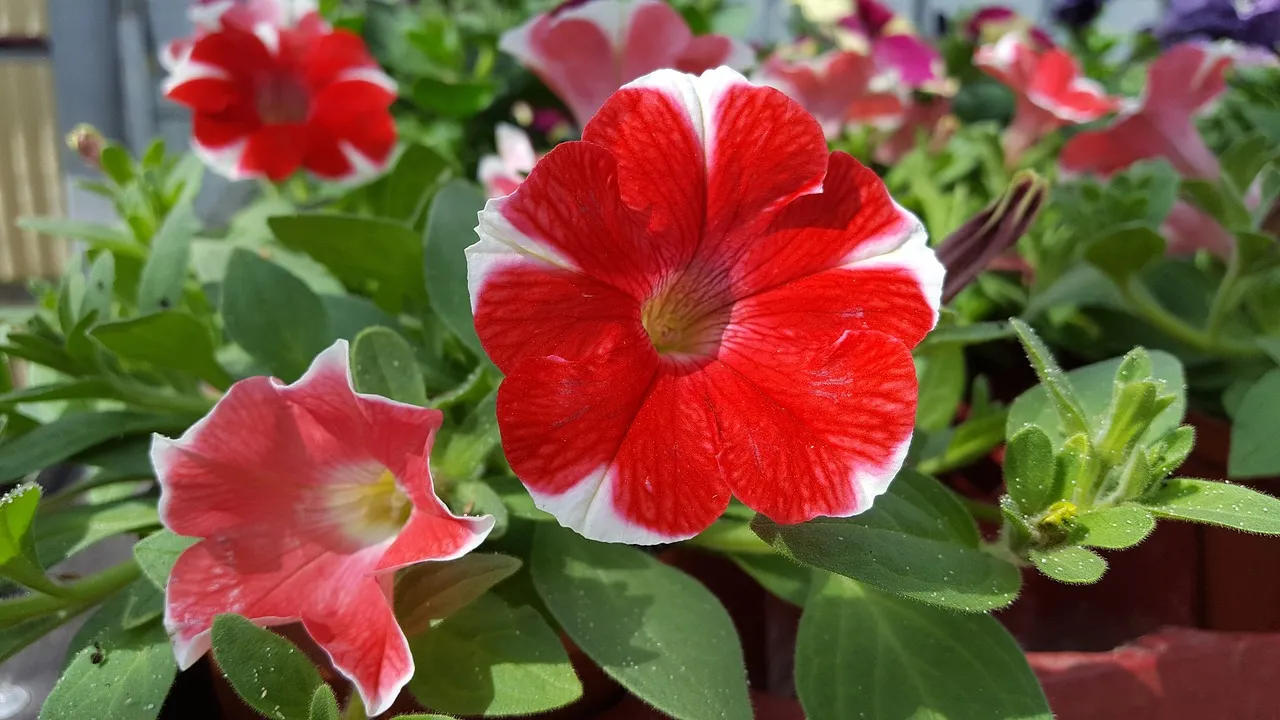
Before adding companion plants, consider the growing requirements and conditions of each species. Ensure that they have similar sunlight and watering needs to prevent one plant from outcompeting the others. Additionally, be mindful of potential space constraints and avoid overcrowding your balcony with too many plants.
By thoughtfully selecting and incorporating companion plants into your petunia garden, you can create a visually stunning and harmonious display that showcases the beauty and diversity of nature.
Seasonal Care: Keeping Petunias Thriving All Year Round
To maintain a thriving and vibrant balcony petunia garden throughout the year, it’s essential to adapt your care routine to the changing seasons. Petunias are sensitive to temperature and light variations, and adjusting your gardening practices accordingly can help your plants remain healthy and blooming all year round.
In the spring, as the weather starts to warm up, petunias begin their active growth phase. During this time, it’s essential to provide them with ample sunlight and regular watering to support their rapid development. Consider using a balanced liquid fertilizer to give your plants a nutrient boost as they put out new growth.
In the summer, when temperatures rise and the days get hotter, petunias may require more frequent watering to prevent them from drying out. Early morning or evening watering is recommended to reduce water evaporation and ensure the plants have adequate moisture throughout the day. If you’re experiencing particularly hot and dry weather, consider providing some shade or using mulch around the plants to retain soil moisture.
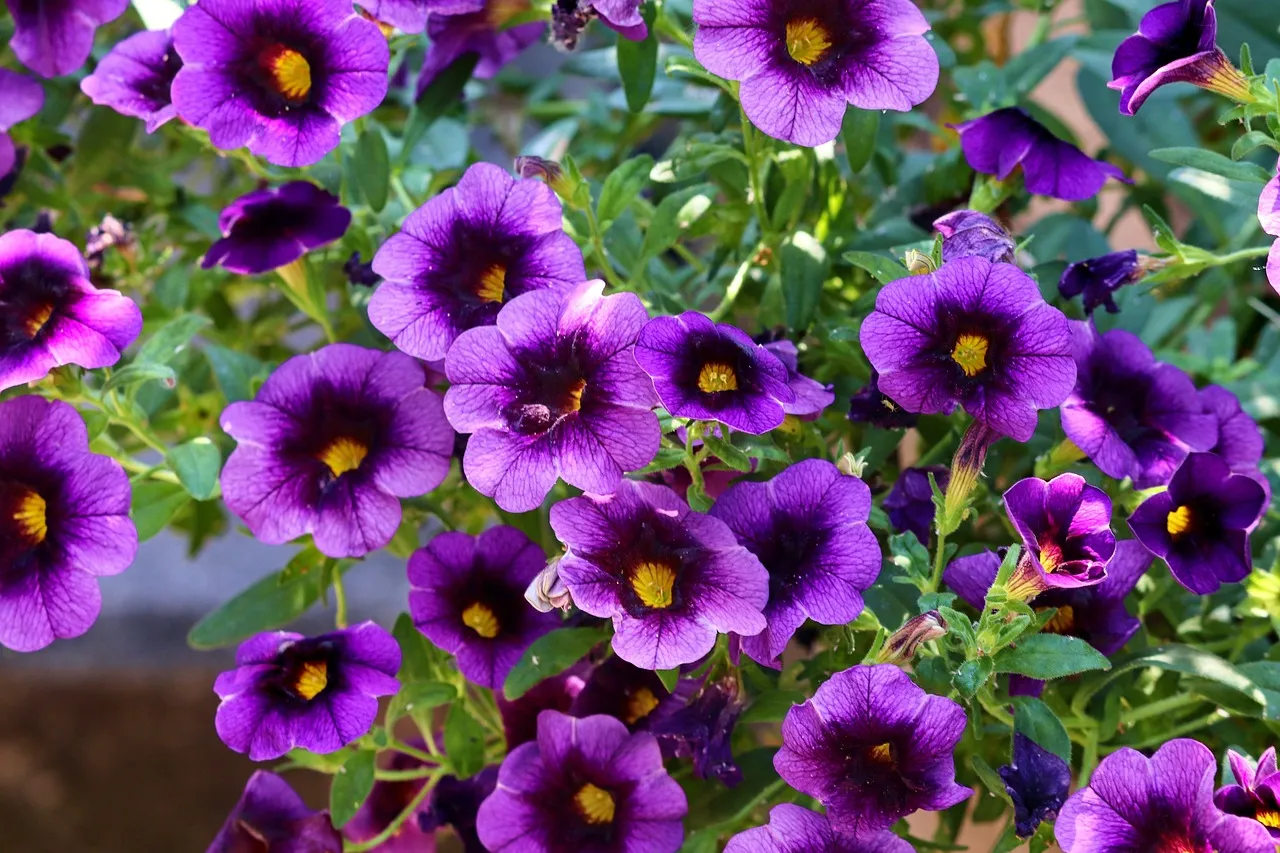
As fall approaches and temperatures start to cool, petunias may slow down their growth and blooming. During this time, reduce your fertilization to help the plants prepare for winter dormancy. Continue watering as needed, but be cautious not to overwater, as cooler temperatures and reduced sunlight may cause the soil to retain more moisture.
In the winter, petunias are susceptible to frost damage, especially in colder climates. Consider moving your containers to a sheltered area or using frost blankets to protect your plants from freezing temperatures. Alternatively, you can treat petunias as annuals and replace them with cold-hardy plants that thrive in winter conditions.
Throughout the year, be vigilant about pest control and disease prevention. Inspect your plants regularly for any signs of infestations or diseases, and take prompt action to address any issues that arise. Prune dead or diseased foliage to encourage healthy growth and prevent the spread of problems. By adapting your care routine to the changing seasons, you can keep your balcony petunia garden flourishing and radiant all year long, creating a delightful and ever-changing display for you to enjoy.
Creating a Balcony Petunia Garden on a Budget: Tips and Tricks
Designing a balcony petunia garden doesn’t have to break the bank. With a bit of creativity and resourcefulness, you can create a beautiful and vibrant display without overspending. Here are some budget-friendly tips and tricks to help you achieve a picture-perfect petunia garden without stretching your wallet.
- Start from Seeds: Growing petunias from seeds is more cost-effective than buying established plants. Choose your favorite petunia varieties and sow the seeds indoors several weeks before the last frost. Once the seedlings are ready, transplant them to your balcony containers for a colorful and affordable display.
- Propagate Cuttings: If you already have petunia plants, consider propagating them through stem cuttings. Snip healthy stems, remove the lower leaves, and place them in water until roots develop. Once the cuttings have rooted, transplant them to your containers to expand your garden at no extra cost.
- Group Purchases: Consider teaming up with friends or neighbors who are also interested in gardening. Buying seeds, plants, or gardening supplies in bulk can lead to significant cost savings for everyone involved.
- DIY Containers: Instead of purchasing expensive containers, get creative and repurpose items you already have at home. Old buckets, baskets, or even wooden crates can be transformed into unique and charming planters with a bit of paint and creativity.
- Shop Sales and Discounts: Keep an eye out for gardening sales, discounts, and special offers at your local nurseries or online retailers. Shopping during the off-season or at the end of the gardening season can lead to substantial savings on plants and supplies.
- Share Cuttings and Seedlings: If you have friends or family who already have petunias, ask if you can take cuttings or seedlings from their plants. Sharing plants is a great way to expand your garden without spending any money.
- Compost and Mulch: Create your own compost using kitchen scraps and yard waste to enrich the soil and provide nutrients to your plants. Additionally, use mulch around your petunias to retain moisture and reduce the need for frequent watering.
- Swap Plants: Organize plant swaps with other gardening enthusiasts in your community. This allows you to exchange plants, cuttings, or seeds, giving you the opportunity to diversify your garden without spending a dime.
- Save Seeds: At the end of the season, collect and save seeds from your petunias for next year’s garden. Properly storing seeds in a cool, dry place ensures that you’ll have an abundant supply of seeds to sow when the next growing season begins.
- Embrace Thrift Stores: Check out thrift stores or yard sales for affordable gardening tools, pots, and decorative items. You may stumble upon hidden gems that can add a unique touch to your balcony petunia garden.
By employing these budget-friendly tips and tricks, you can create a stunning and vibrant balcony petunia garden without straining your finances, proving that beauty and creativity can thrive even on a limited budget.
Petunia Propagation: Expanding Your Garden with Cuttings and Seeds
If you’re looking to expand your balcony petunia garden without breaking the bank, propagation is a cost-effective and rewarding option. There are two primary methods of propagating petunias: using stem cuttings and starting from seeds.
To propagate petunias from stem cuttings, begin by selecting healthy stems from mature plants. Using a clean and sharp pair of scissors or garden shears, snip several inches of the stem just below a leaf node, where leaves are attached. Remove the lower leaves, leaving only a few leaves at the top of the cutting.
Place the cuttings in a container with water, ensuring that the leaves don’t touch the water’s surface. Alternatively, you can dip the cut ends in rooting hormone to encourage faster root development. In a few weeks, one can notice that the cuttings are developing roots.
Once the roots are about an inch long, transplant the cuttings into individual pots filled with a well-draining potting mix. Keep the pots in a warm and bright location, ensuring they receive adequate sunlight. After a few more weeks of growth, the cuttings should be ready to be planted into your balcony garden.
Propagating petunias from seeds is another cost-effective method. Start by collecting ripe seeds from existing petunia plants or purchase seeds from a reputable supplier. Sow the seeds indoors several weeks before the last frost, as petunias require warmth and ample sunlight to germinate.
Fill seed trays or small pots with a seed-starting mix and press the seeds lightly into the soil. Cover the seeds with a thin layer of soil, mist the soil surface with water, and cover the container with plastic wrap to create a mini greenhouse effect.

Place the containers in a warm and brightly lit location, ensuring that the soil remains consistently moist. Once the seedlings have developed several sets of true leaves, transplant them into individual pots or your balcony garden.
By propagating petunias through stem cuttings or seeds, you can expand your garden and experiment with different varieties and colors without spending a fortune on new plants. The process of propagating petunias is also a delightful and satisfying experience that allows you to nurture and grow new life from existing plants.
Dealing with Common Petunia Pests and Diseases: Prevention and Remedies
As with any garden, petunias are susceptible to various pests and diseases that can hinder their growth and beauty. By identifying potential issues early on and taking proactive measures, you can maintain a healthy and thriving balcony petunia garden.
One common pest that affects petunias is aphids. These tiny insects feed on plant sap, causing the leaves to become distorted and stunted. To prevent aphids, regularly inspect your plants for infestations and remove them by spraying a strong jet of water or using insecticidal soap. Ladybugs and beetles are natural predators of aphids and can help control their numbers.
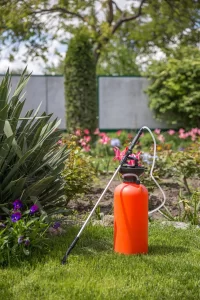
Another troublesome pest is the spider mite. These tiny pests are difficult to spot but can cause severe damage by sucking the plant’s juices and leaving behind fine webs. Introduce predatory mites or use insecticidal soap to combat spider mites and prevent their spread.
Fungal diseases, such as powdery mildew and gray mold, can also affect petunias, especially in humid or damp conditions. To prevent fungal issues, avoid overwatering and provide good air circulation around your plants. Remove any affected leaves promptly and consider using fungicidal sprays as a preventative measure.
Root rot is a serious disease that affects petunias, especially in poorly draining soil. To prevent root rot, use containers with drainage holes and avoid overwatering. Ensure that your balcony’s drainage system is working correctly to prevent water from pooling around your plants.
Japanese beetles are voracious pests that can defoliate petunia plants. Handpick and dispose of beetles or use pheromone traps to attract and trap them away from your garden.
Neem oil or horticultural oil can be used as a preventative measure to control a wide range of pests and diseases in your petunia garden. Apply the oil according to the manufacturer’s instructions to maintain a healthy and pest-free environment for your plants.
Regularly inspect your petunia garden for any signs of pests or diseases, and take prompt action to address any issues you find. Keeping your plants healthy and stress-free will make them more resistant to pests and diseases, ensuring a flourishing and vibrant balcony petunia garden.
Petunia Garden Maintenance: Pruning, Deadheading, and Fertilizing
Regular maintenance is essential for keeping your balcony petunia garden in top shape and encouraging continuous blooming throughout the growing season. By performing tasks such as pruning, deadheading, and fertilizing, you can keep your petunias healthy and thriving.
Pruning is a vital part of petunia care, as it helps promote bushier growth and prevents leggy or straggly plants. Pinch back the tips of the stems periodically to encourage branching and a fuller appearance. This can be done by simply snipping off the top few inches of each stem using clean garden shears.
The process of removing wasted flowers from a plant is known as deadheading. By doing so, you prevent the formation of seeds and encourage the plant to produce more flowers. Deadheading also keeps the plant looking tidy and prevents the garden from looking unkempt. Remove faded flowers regularly by pinching them off or using sharp scissors.
Fertilizing is essential to provide your petunias with the necessary nutrients for healthy growth and blooming. Choose a balanced liquid fertilizer and apply it according to the manufacturer’s instructions. Avoid over-fertilizing, as excessive nutrients can lead to excessive foliage growth and reduced flower production.
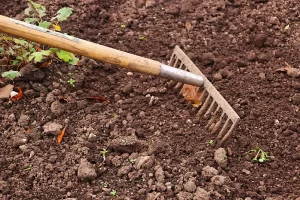
Additionally, consider using a slow-release fertilizer to provide a steady supply of nutrients to your plants over time. Slow-release fertilizers can be mixed into the potting soil or applied as a top dressing on the soil surface.
Regularly inspect your petunias for any signs of nutrient deficiencies or pest infestations. Adjust your maintenance routine as needed to address any issues that arise.
By pruning, deadheading, and fertilizing your petunia garden regularly, you can encourage vigorous growth and ensure that your plants remain healthy and blooming throughout the growing season.
Showcasing Your Petunia Garden: Photography Tips for Stunning Shots
After putting in the effort to design and maintain a beautiful balcony petunia garden, it’s time to showcase its splendor through stunning photographs. Capturing the beauty of your plants and arrangements will not only provide you with a sense of accomplishment but also inspire and delight others who see your images.
Here are some photography tips to help you capture the essence and beauty of your petunia garden:
- Lighting: Choose the right lighting to enhance the colors and details of your petunias. Early morning or late afternoon light provides a soft and warm glow, ideal for capturing the delicate petals and textures. Avoid photographing in harsh midday sunlight, as it can create harsh shadows and overexpose your images.
- Composition: Experiment with different angles and perspectives to find the best composition for your photographs. Consider getting down to ground level for a unique view of your petunias or shoot from above for a captivating aerial perspective.
- Focus: Ensure that your petunias are in sharp focus. Use a small aperture (higher f-stop number) to increase depth of field and keep all elements of the image in focus.
- Background: Pay attention to the background of your photos. Choose a simple and uncluttered background that complements the colors and shapes of your petunias, avoiding distractions that may take attention away from the main subject.
- Rule of Thirds: Apply the rule of thirds to create a balanced and visually appealing composition. Imagine dividing your frame into a grid of nine equal squares, and position the main elements of your photo along the grid lines or at the intersections.
- Leading Lines: Use leading lines, such as pathways or balcony railings, to guide the viewer’s eye towards the focal point of your photo – the petunias. Leading lines add depth and dimension to your images, making them more visually engaging.
- Depth: Incorporate depth into your photos by including elements in the foreground, middle ground, and background. This adds a sense of dimension and draws the viewer into the scene.
- Macro Photography: Experiment with macro photography to capture intricate details and textures of individual petals or dewdrops on your petunias. A macro lens or macro mode on your camera can help achieve stunning close-up shots.
- Timing: Be patient and wait for the perfect moment to capture your petunias at their best. Early morning or after a light rain can provide opportunities for beautiful and fresh-looking photos.
- Post-Processing: After taking your photos, consider some post-processing to enhance colors, contrast, and sharpness. Be mindful not to over-edit, as natural-looking photos often have the most impact.
By applying these photography tips and techniques, you can create stunning images of your balcony petunia garden, capturing its beauty and sharing it with the world.
Year-Round Petunia Displays: Introducing Seasonal Rotations for Continuous Beauty
While petunias are known for their vibrant and abundant blooms, their peak flowering period typically lasts from spring to early fall. To keep your balcony garden looking beautiful throughout the year, consider introducing seasonal rotations and incorporating other cold-hardy or winter-flowering plants.
In the spring and summer, let your petunias take center stage, showcasing their colorful and eye-catching blooms. Maintain regular deadheading and pruning to encourage continuous flowering and keep your petunias looking fresh and lush.
As fall approaches, consider introducing cold-hardy plants to replace some of the petunias that may start to fade with cooler temperatures. Plants like pansies (Viola), ornamental kale, and chrysanthemums (mums) can add a burst of color to your garden and thrive in cooler weather.

During the winter months, when petunias may not survive the cold, you can create a beautiful winter display with plants like winter-blooming pansies, snapdragons (Antirrhinum), and winter heath (Erica). These cold-tolerant plants will keep your balcony garden alive with color and beauty even during the coldest months.
Consider using evergreen foliage plants, such as ornamental grasses or trailing ivy, to provide a backdrop of greenery and texture throughout the year. These plants will add visual interest to your garden during the times when the petunias may not be in full bloom.
To further extend your petunia display, consider growing some petunias indoors during the winter months. Place them in a sunny windowsill or under a grow light to provide them with adequate light and warmth. You can then reintroduce these indoor-grown petunias to your balcony garden when the weather warms up.
By introducing seasonal rotations and combining cold-hardy plants with your petunias, you can maintain a year-round display of beauty and color on your balcony, ensuring continuous joy and admiration from yourself and others.
‘Each of these blog sections offers valuable insights and detailed explanations to help readers create a picture-perfect balcony petunia garden. By combining practical advice, creative ideas, and seasonal considerations, this comprehensive guide covers every aspect of balcony petunia gardening, ensuring readers have all the tools they need to create a stunning and flourishing outdoor space..
Most Frequently Asked Questions on Petunia
What are the best petunia varieties for a balcony garden?
When designing a picture-perfect balcony petunia garden, selecting the right varieties is crucial. For small spaces, consider compact options like milliflora and multiflora petunias. If you have ample space and love big, showy blooms, grandiflora petunias are an excellent choice. Wave petunias, with their trailing habit, are perfect for cascading over container edges, adding a graceful touch to your garden.
How do I care for petunias in containers on a balcony?
Container-grown petunias need proper care to thrive on a balcony. Ensure your containers have good drainage, as waterlogged soil can harm the plants. Place them in a sunny spot, as petunias require full sunlight for abundant flowering. Regular watering, deadheading, and occasional fertilizing will keep your petunias healthy and blooming throughout the season.
Can I grow petunias from seeds on my balcony?
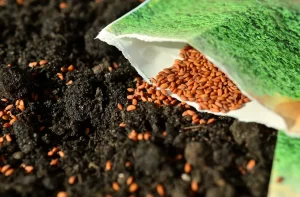
Yes, you can grow petunias from seeds on your balcony. Start by sowing the seeds indoors in early spring, as they require warmth and sunlight for germination. Once the seedlings are strong enough, transplant them to your containers on the balcony. Growing petunias from seeds allows you to explore a wide range of varieties and colors.
How often should I water my petunias in containers?
Petunias in containers need regular watering to thrive. Check the soil moisture daily, especially during hot weather. Overwatering can cause root rot, so water only when the top inch of soil seems dry. Early morning or evening watering is ideal to reduce water evaporation and prevent stress on the plants.
Do petunias need deadheading to keep blooming?
Yes, deadheading is essential for petunias to continue blooming. Remove faded flowers regularly to prevent seed formation, which redirects the plant’s energy into producing more blooms. Pinch or snip off the spent flowers, and your petunias will reward you with continuous and vibrant flowering.
Can I grow petunias indoors on my balcony?
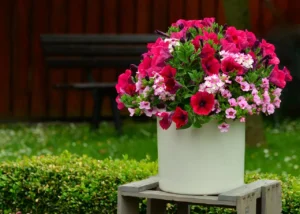
Growing petunias indoors on your balcony is possible if you have enough sunlight. Choose a sunny location that receives at least 6-8 hours of direct sunshine per day. Use containers with good drainage and a well-draining potting mix. Indoor-grown petunias may require additional support, as they may become leggy in search of sunlight.
How do I create a visually appealing petunia arrangement on my balcony?
Designing a visually appealing petunia arrangement involves careful planning and creativity. Choose a variety of colors and petunia types to create contrasting or complementary combinations. Consider the height and growth habits of each plant to achieve a balanced and eye-catching display. Spacing out the containers strategically can add depth and dimension to your balcony garden.
What are the common pests and diseases that affect petunias?
Petunias can face challenges from pests like aphids and spider mites. To prevent infestations, regularly inspect your plants and take prompt action if you spot any pests. Diseases like powdery mildew and gray mold can also occur, especially in humid conditions. Ensure good air circulation and avoid flooding to avoid these problems.
Can I overwinter petunias to enjoy them next year?
Petunias are typically grown as annuals, but in mild climates, you may attempt to overwinter them. Before the first frost, take cuttings from healthy plants and root them indoors. Alternatively, bring your potted petunias indoors and place them in a sunny, cool spot. Be prepared to protect them from frost and provide proper care during the winter months.
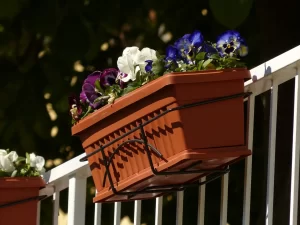
How can I keep my balcony petunia garden looking beautiful all year round?
To maintain a stunning balcony petunia garden throughout the year, consider seasonal rotations and companion plants. Introduce cold-hardy flowers in the fall and winter to replace petunias that may not survive the colder months. Use evergreen foliage plants to provide year-round greenery and texture. Additionally, embrace a variety of petunia types and colors to create continuous beauty and interest in your balcony garden.
By addressing these frequently asked questions, you can confidently plan and create a picture-perfect petunia garden on your balcony, and enjoy a delightful and flourishing display of color and beauty throughout the growing season.
#BalconyGardenDesign #PetuniaTips
